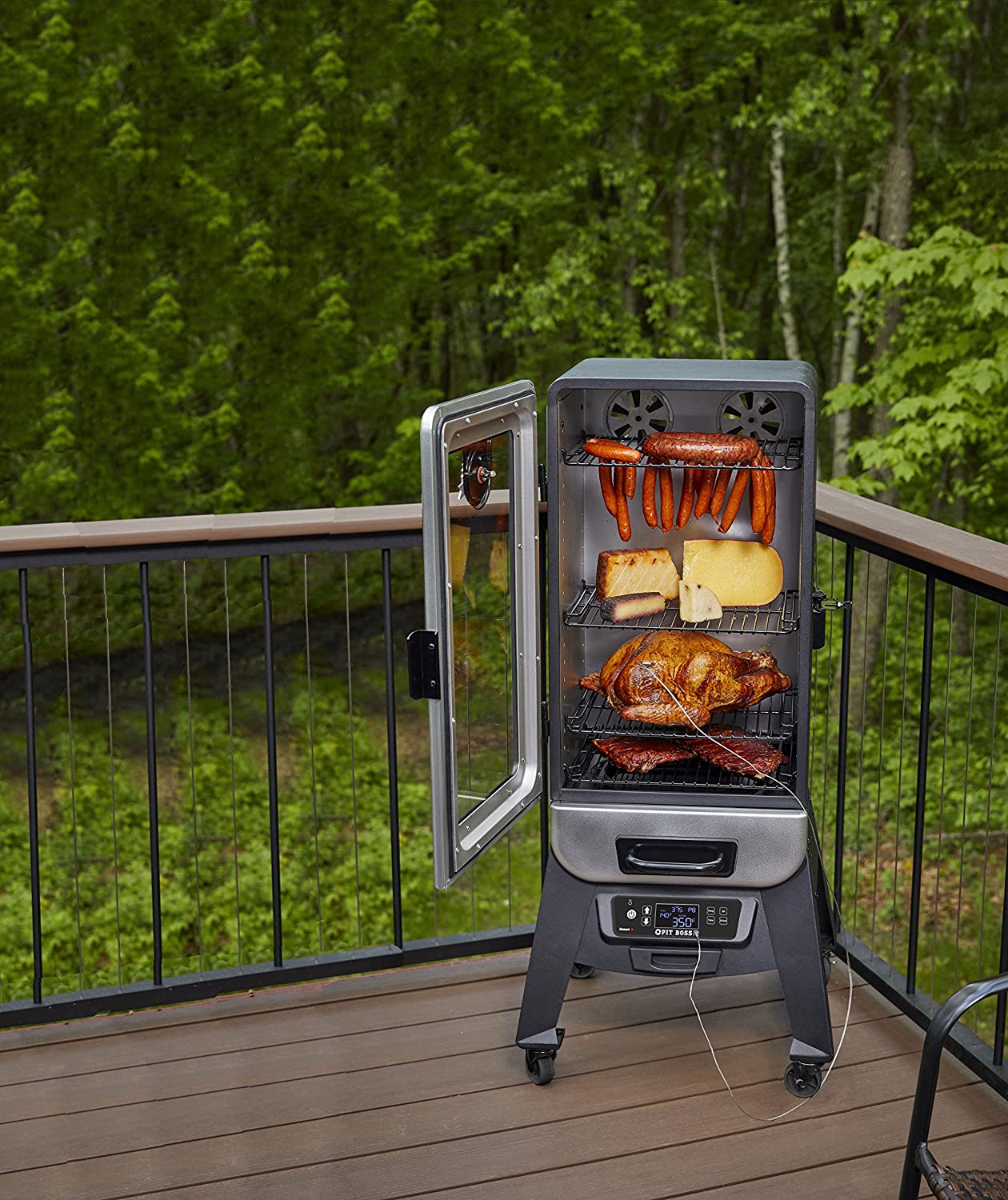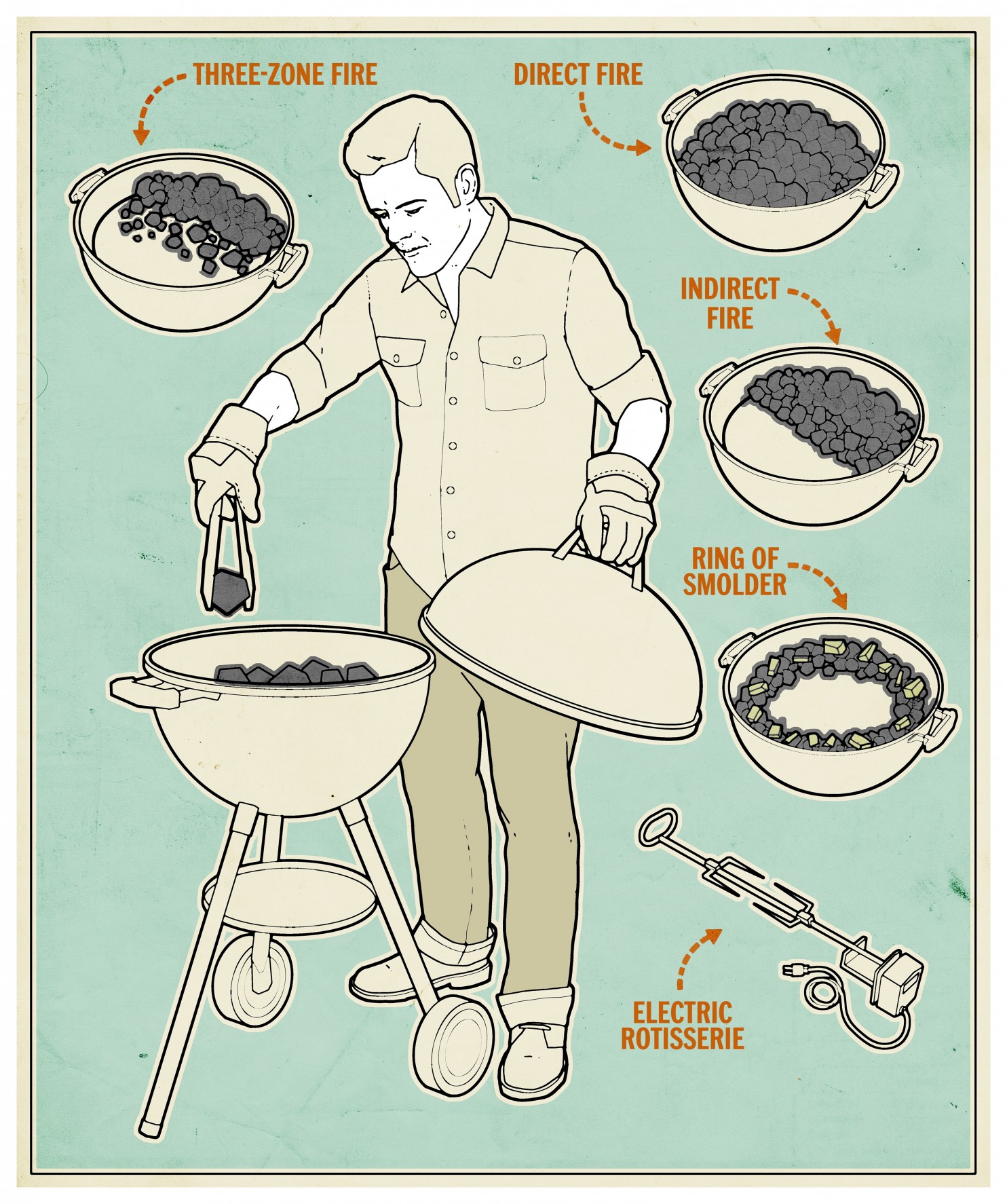
If you've got a space in your home, why not consider using a grill inside? It's not hard to see how anyone wouldn't like to save money on propane. But how can you keep a grill clean and in good condition? Below are some tips to help you grill indoors. Read on to learn more. Don't forget to learn as much as you can about indoor grilling. These are the top tips for grilling meat.
Make sure your indoor grill has adequate ventilation. Many grills aim to reduce fat. You'll need a kitchen venthood to vent the smoke. You can broil food in an oven if that is not possible. It is important to clean your indoor barbecue grill frequently, as it can trap grease and odors. It can be difficult for you to remove any residues so make sure it is as clean as possible.

Also, make sure the grill's cable doesn't block airflow to the kitchen. Some grills have a drip loop, which allows moisture to collect inside the device. If you don't have a drip loop, you can use a flat, thin tool to scrape away the debris. A quality cover should be vented to ensure that moisture doesn't buildup in the grill and cause it to rust.
The third is that you might consider buying an indoor grill if your outdoor space is limited. An indoor grill will cook just about anything. An indoor grill is easier to use and requires less electricity. The indoor grill has another benefit: it can reduce the cooking time. These products can be plugged in to the wall and stored in small spaces. This means you can use them in your home.
An indoor grill can also help to reduce fat in your food. Some models are labelled "lean meats, reduced fat", and boast a 30% reduction in saturated fat. These grills are great for cooking breakfast, lunch and dinner. They are also ideal for brunch. If you don't want to spend money on a grill, an indoor one can be the answer. An indoor grill will allow you to cook much faster and easier than an outdoor one.

The indoor grill reduces the need to cook oil as the heat from the grill is not emitted. A smoker should only be used indoors. This is good for both your health and your safety. Smokeless grilling will impart a distinctive flavor to the meat. The smokeless grill does not emit any toxins and can be used as a portable oven. However, it is important to follow these guidelines.
FAQ
Do I need any special equipment to cook?
Cooking doesn't require special equipment. The right tools can make cooking much easier. For example, you could use a knife instead of a fork to eat pasta or a whisk instead of a hand mixer to whip egg whites into stiff peaks. The right tools make cooking easier and faster.
How do I become a Chef?
There are many ways to become a chef. Start by enrolling in a class at a vocational school or community college. You can then look into going to culinary school. Finally, you can take a paid internship.
What are the Essential Skills to Be a Chef?
You must hold a bachelor's in culinary arts to be a chef. A series of tests must be passed by the ACF. A certificate will verify your qualifications once you have met all of these requirements.
How Do I Learn About Cooking?
All over the country, cooking classes are offered. Many schools offer classes in baking, pastry, wine tasting, and more. If you're interested in learning more about baking, you can either enroll at a community college or vocational school. Or you can attend a private class.
Statistics
- The median pay for a chef or head cook is $53,380 per year or $25.66/hour, according to the U.S. Bureau of Labor Statistics (BLS). (learnhowtobecome.org)
- You'll be amazed that over 90% of CIA students receive scholarships and grants to finish their culinary studies. (ischoolconnect.com)
- On average, chefs earn $58,740 a year, according to the BLS. - learnhowtobecome.org
External Links
How To
How to make the perfect omelet
Omelets is one of my favourite breakfast foods. How do you make them perfect? Many different recipes and methods have failed to work for me. So I wanted to share some tips and tricks so that you can make delicious, fluffy omelets every morn.
When making omelets, it is important to be aware that eggs can be temperamental. Eggs must be purchased fresh, preferably organic, and kept chilled until ready for cooking. If they are not kept cold enough, the whites won’t form properly. The yolks will also break down too quickly and become runny. This will make your omelets appear strangely colored. If you want to make omelets right away, it's best not to use eggs that are too cold.
You can also separate the egg before you add it to the pan. You don't want the white to get mixed with the yolk, as this could cause the egg to curdle.
The egg can burn if it is placed directly on the stovetop. Instead, place the egg in the microwave for 10 second before you put it in the skillet. The microwave heat cooks your egg just right, without it becoming too soft.
Next, let us talk about how to mix the eggs. Mix eggs well together. Turn the bowl upside down and grab the whisk to do this. Next, shake the bowl vigorously. By doing this, the egg is thoroughly mixed with the air in the bowl.
The fun part is now - adding the milk to the mixture. First, pour half of the milk into the beaten eggs and then fold the eggs gently into the remaining milk. If you still see streaks of eggs, don't worry. These streaks will disappear once the omelet has been turned over.
After you have folded your eggs, heat up the oil on medium heat. Wait for it to get hot. Once the oil has gotten hot, add 1/4 cup of butter and swirl it around so that the entire pan is coated. Now carefully crack open the lid of the pan and sprinkle salt into the pan. An additional pinch of salt will prevent the omelet form sticking to your pan.
Cover the pan once you have formed the omelet. Wait for the top to set. Use a spatula to flip the omelet or turn the pan upside-down. Cook the other side for about a minute. Take the omelet out of the pan and immediately serve.
This recipe works best using whole milk. Skimmed milk is also possible.